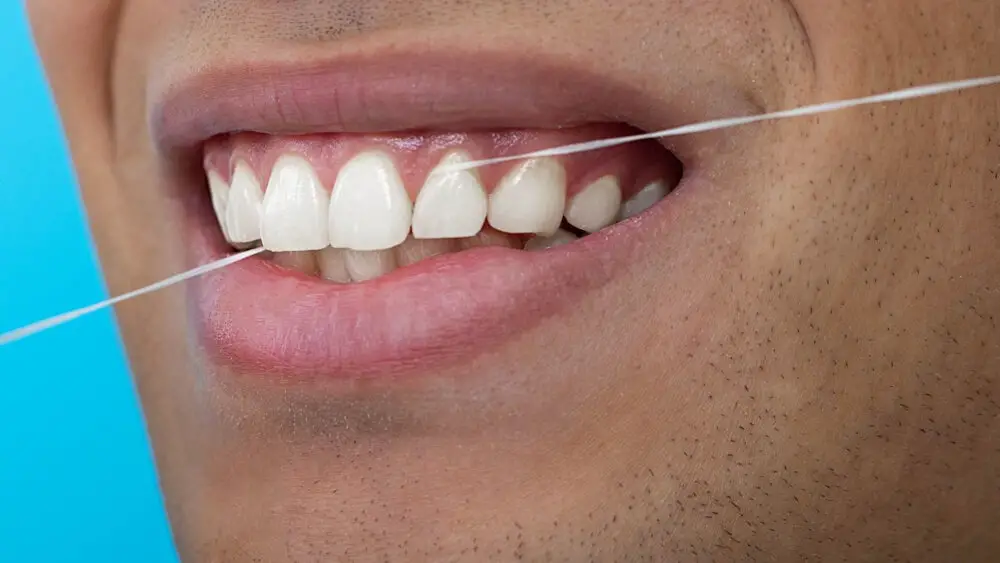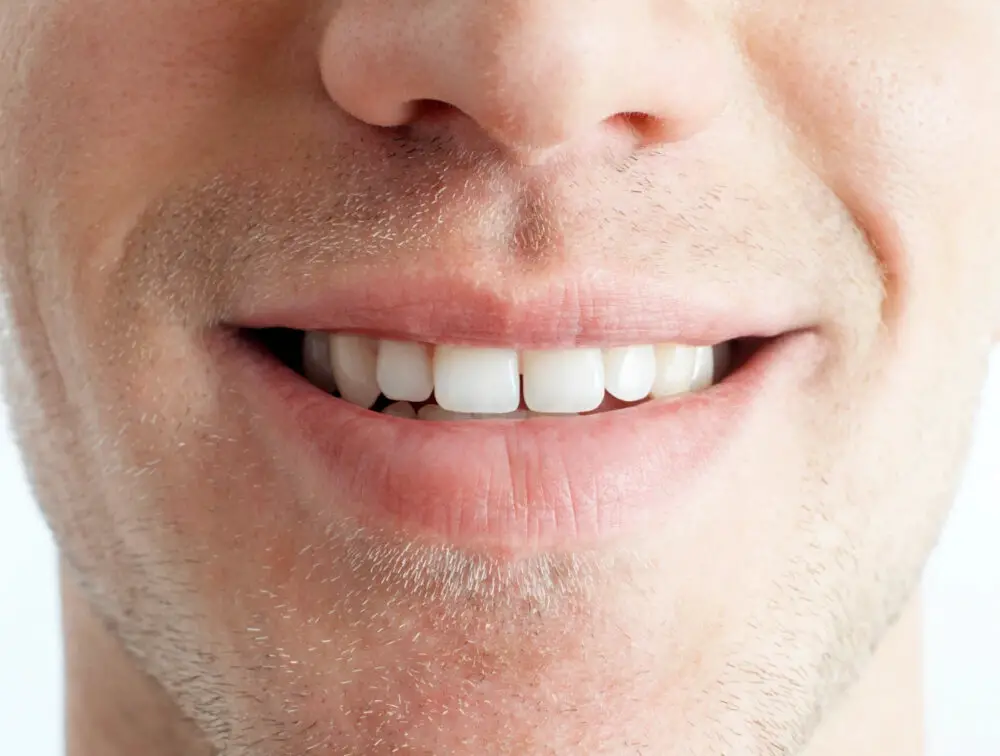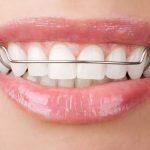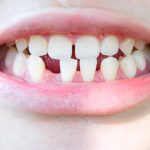How Long to Use Syringe After Wisdom Teeth Extraction: A Comprehensive Guide

Wisdom tooth extraction is a common dental procedure, especially among young adults. While the surgery itself is relatively simple, the recovery process can be challenging. One of the most crucial aspects of recovery is managing the pain and swelling that often accompany the extraction. One of the tools commonly used to manage pain and swelling is a syringe, which is used to irrigate the extraction site with a saline solution. However, many patients are unsure about how long to use the syringe after wisdom teeth extraction. In this comprehensive guide, we will explore this question in depth and provide answers and advice to help patients navigate the recovery process. Using a syringe after wisdom teeth extraction can be an essential tool in the healing process. The syringe is typically used to flush out food particles and bacteria from the extraction site, which can help prevent infection and reduce inflammation. However, using a syringe too early or too late can cause complications and delay the healing process. Patients need to understand when to start using the syringe, how often to use it, and when to stop using it. This comprehensive guide aims to provide patients with the information they need to use the syringe effectively, manage their pain and swelling, and ensure a smooth and speedy recovery.
Wisdom teeth extraction is a dental procedure that involves the removal of the third molars located at the back of the mouth. These teeth usually emerge between the ages of 17 and 25 and can cause a variety of dental issues, including overcrowding, impaction, and infection. To prevent these problems, dentists may recommend wisdom teeth extraction. The procedure is typically performed under local anesthesia and involves making an incision in the gums to access the tooth. The tooth is then loosened and removed, and the incision is closed with stitches. Recovery from wisdom teeth extraction can take several days to weeks, during which time patients may experience pain, swelling, and difficulty eating or drinking. A syringe may be provided to help clean the site of extraction and promote healing.
Proper aftercare is crucial to prevent complications after wisdom teeth extraction. Failure to follow the recommended aftercare instructions can lead to various complications, such as bleeding, infection, dry socket, and delayed healing. It is essential to maintain good oral hygiene by gently brushing and rinsing the mouth with saltwater to keep the extraction site clean. Avoiding smoking, alcohol intake, and using a straw can also prevent complications. Adequate rest, a healthy diet, and taking prescribed medication on time can help manage pain and promote healing. By following the aftercare instructions, patients can reduce the risk of complications and ensure a smooth recovery process.
After having your wisdom teeth extracted, it’s essential to take proper care of your mouth to prevent infection and promote healing. One crucial tool that plays a significant role in aftercare is a syringe. The syringe allows you to clean the extraction site and remove any food particles or debris that may have accumulated. By flushing the area with saltwater or prescribed mouthwash, you can reduce the risk of infection and promote faster healing. It’s important to use the syringe gently and follow your dentist’s instructions carefully to avoid damaging the extraction site or causing any further discomfort. With proper use, a syringe can be a valuable tool in your aftercare routine and help ensure a smooth recovery after wisdom teeth extraction.
What is a syringe and why is it used after wisdom teeth extraction?

A syringe is a medical instrument that is used for injecting or withdrawing fluids from the body. It consists of a hollow cylinder with a plunger, which is used to push or pull the fluid. Syringes are commonly used in medical procedures, such as vaccinations, insulin injections, and blood tests. They are also used after wisdom teeth extraction to help patients clean the extraction site and prevent infection. The syringe is filled with salt water or a medicated rinse, which is used to irrigate the extraction site and remove any food particles or debris that may have accumulated. This helps to prevent infection and promote healing of the extraction site. After wisdom teeth extraction, patients are often advised to use a syringe to clean the extraction site. This is because the extraction site is prone to infection and can become easily irritated. The syringe helps to remove any food particles or debris that may have accumulated in the extraction site, which can cause infection and delay the healing process. Using a syringe also helps to promote blood flow to the extraction site, which can speed up the healing process. Patients are typically advised to use a syringe for several days after the extraction procedure, until the extraction site has healed and the risk of infection has decreased. Overall, the use of a syringe after wisdom teeth extraction is an effective way to promote healing and prevent infection of the extraction site.
A syringe is a medical instrument that consists of a hollow cylindrical barrel, a plunger and a needle. The purpose of a syringe is to inject or withdraw fluids from the body. Syringes can be used for a variety of medical purposes, including administering medication, drawing blood, or injecting local anesthesia. In the context of wisdom teeth extraction, syringes are often used to irrigate the surgical site, clean the area, or apply medication. It is important to use the syringe properly and follow the instructions of your dentist or oral surgeon to ensure proper healing and prevent complications.
After wisdom teeth extraction, a syringe is necessary to maintain proper oral hygiene and prevent infection. The procedure involves creating an open wound in the mouth, which can easily trap food particles and bacteria. The syringe allows for gentle irrigation of the extraction site and removal of any debris that may have accumulated. Additionally, the syringe can help to dislodge blood clots that may have formed, which can lead to painful dry sockets. Proper use of the syringe can promote healing and prevent complications, making it an essential tool for post-operative care. Overall, using a syringe after wisdom teeth extraction is crucial for maintaining good oral health and preventing further complications.
Using a syringe after wisdom teeth extraction can offer a multitude of benefits. Firstly, it allows for precise and controlled irrigation of the extraction site, flushing out any debris and promoting healing. Additionally, it can help to remove any food particles that may have become lodged in the extraction site, reducing the risk of infection. Using a syringe can also help to reduce swelling and discomfort in the days following the procedure, as it allows for gentle and targeted application of medication or salt water solution. Overall, incorporating a syringe into your post-operative care routine can help to speed up the healing process and ensure a smooth recovery.
How to use a syringe for proper aftercare

When it comes to proper aftercare following a wisdom teeth extraction, using a syringe can be a vital part of the healing process. This tool is designed to help remove food particles and debris from the surgical site, which can help prevent infections and promote faster healing. However, it is important to use the syringe properly to avoid causing additional damage to the surgical site. To use a syringe for proper aftercare, start by filling it with warm saltwater or an antiseptic solution recommended by your dentist or oral surgeon. Gently insert the syringe into the extraction site and gently squirt the solution to flush out any debris or food particles. Avoid applying too much pressure or force, as this can cause pain or discomfort. It is also important to avoid suctioning or forcefully spitting out the solution, as this can dislodge the blood clot and delay the healing process. Repeat this process several times a day, especially after meals and before bed, to ensure proper hygiene and promote faster healing. In conclusion, using a syringe for proper aftercare following a wisdom teeth extraction is essential for ensuring a speedy and successful recovery. By following these simple steps, you can help prevent infections, reduce pain and swelling, and promote faster healing. If you have any concerns or questions about using a syringe or other aftercare practices, be sure to consult with your dentist or oral surgeon for guidance and support.
Using a syringe after wisdom teeth extraction can be a daunting task, but with the right approach, it can be done with ease. First, ensure that the syringe is clean and sterilized before use. Fill it with warm saltwater or prescribed medication, being careful not to overfill. Next, tilt your head slightly forward and insert the syringe into the extraction site, aiming towards the back of your mouth. Gently apply pressure to the plunger, releasing the solution into the socket. Be sure to aim away from any blood clots that may have formed. After use, clean the syringe thoroughly and store it in a safe place. Remember, proper use of a syringe can aid in the healing process and shorten recovery time after wisdom teeth extraction.
Proper technique and hygiene are of utmost importance in the post-operative care of wisdom teeth extraction. The use of a syringe to irrigate the extraction site is a crucial step in the healing process, and it is essential to follow the proper technique to avoid any complications. Using a syringe with a blunt tip and warm saltwater solution to rinse the extraction site helps remove any debris or food particles that may have accumulated. It is essential to maintain good hygiene during this process by washing your hands thoroughly before and after the procedure, and to use a clean syringe each time. Neglecting proper technique and hygiene can lead to infection and delay the healing process, which can be detrimental to your overall health. Therefore, it is imperative to follow the guidelines provided by your dentist or oral surgeon and practice good technique and hygiene to ensure a smooth and speedy recovery.
When it comes to post-operative care after wisdom teeth extraction, there are several common mistakes that patients should avoid to ensure a smooth and speedy recovery. One of the most significant errors is not following the dentist’s recommended instructions for using a syringe to clean the extraction site. Patients must use the syringe as directed, gently rinsing the area with warm salt water, and being careful not to dislodge any blood clots. Additionally, avoiding hard or chewy foods, smoking, and alcohol consumption during the recovery period is crucial. Neglecting proper oral hygiene, such as brushing and flossing, can also lead to infection and other complications. By avoiding these common mistakes, patients can help ensure their recovery is as comfortable and efficient as possible.
How long should a syringe be used after wisdom teeth extraction?

After a wisdom teeth extraction, it is common for a dentist or oral surgeon to prescribe a syringe to help clean out the surgical site. The syringe is used to irrigate the extraction area with a saltwater solution, which helps prevent infection and aids in the healing process. However, it is important to use the syringe properly and for the appropriate amount of time to avoid any complications. Typically, a syringe should be used for the first week after the extraction, or until the surgical site has fully healed. This timeframe may vary depending on each individual case, as some people may heal quicker than others. It is important to follow the instructions given by the dentist or oral surgeon, as they will provide specific guidance based on the individual’s unique situation. Additionally, it is important to properly clean the syringe after each use to avoid any bacterial growth that can lead to infection. Properly using the syringe can aid in the healing process and help prevent any complications, such as dry socket or infection.
After a wisdom tooth extraction, the duration of syringe use can vary depending on the individual’s healing process. Typically, the use of a syringe is recommended for the first few days following surgery to help clean and irrigate the surgical site. However, if the healing process is slow or complications arise, the use of a syringe may need to be extended. It is important to follow the specific instructions given by the dentist or oral surgeon regarding the duration of syringe use, as well as proper technique and solution to use. Overuse or incorrect use of the syringe can lead to irritation or infection of the surgical site, so it is crucial to follow the guidelines carefully.
There are numerous factors that can influence how long one should use a syringe after wisdom teeth extraction. Firstly, the extent of the surgical procedure and the amount of trauma inflicted on the area can impact the healing process. Secondly, the patient’s overall health, including their immune system and ability to fight off infections, can play a role in how long the syringe is needed. Additionally, the patient’s adherence to post-operative instructions, such as proper oral hygiene and avoiding certain foods, can affect the healing process and therefore the duration of syringe use. Furthermore, the type of syringe being used and the frequency at which it is used can also play a role in determining how long it is needed. Finally, any complications that may arise during the healing process can prolong the need for syringe use.
Using a syringe for too long or too short a period can pose various risks. If a syringe is used for too long, it can cause irritation and inflammation in the gum tissues, which can lead to pain and discomfort. Additionally, prolonged use of a syringe can also increase the risk of infection, as it can introduce bacteria into the open wound. On the other hand, using a syringe for too short a period may not effectively clean the extraction site, which can also lead to infection and delay the healing process. It is important to follow the recommended guidelines for using a syringe after wisdom teeth extraction to ensure proper healing and minimize the risk of complications.
Alternatives to using a syringe for aftercare

For many patients, the thought of using a syringe for aftercare following wisdom teeth extraction can be daunting. Fortunately, there are several alternatives available that can be just as effective. One option is to use a squeeze bottle that allows you to apply a gentle stream of water to the affected area. This can be an excellent option for those who are uncomfortable with the use of a syringe or who have difficulty manipulating the device. Another alternative is the use of a water flosser. This device uses a stream of water to clean the teeth and gums, making it an ideal choice for those who are looking for a more comprehensive cleaning experience. Another alternative to using a syringe for aftercare is the use of oral irrigation devices. These devices are designed to spray water or other solutions into the mouth, helping to clean the teeth and gums. They are particularly useful for those who have difficulty reaching certain areas of the mouth with a toothbrush or floss. Additionally, some oral irrigators come with special attachments that are designed to be used specifically for post-operative care following wisdom teeth extraction. These attachments can be used to deliver a gentle stream of water directly to the affected area, helping to flush out any debris or bacteria that may be present.
Aside from using a syringe for irrigation, there are other postoperative techniques that can help in the healing process after wisdom teeth extraction. One of them is applying ice packs to the affected area for the first 24 to 48 hours to reduce swelling and discomfort. Pain medication and antibiotics may also be prescribed by the dentist or oral surgeon to alleviate pain and prevent infection. It is also important to maintain good oral hygiene by brushing gently around the extraction site and rinsing with saltwater or prescribed mouthwash. Additionally, eating soft foods and avoiding hard, crunchy, or sticky foods can prevent irritation or injury to the healing site. Proper postoperative care is crucial to ensure a smooth and speedy recovery after wisdom teeth extraction.
When it comes to administering medication, syringes are one of the most popular options. They allow for precise dosages and are easy to use. While there are other methods of administering medication, such as pills or liquid formulations, they may not be as effective or precise as syringes. Additionally, syringes can be used for a variety of purposes, such as drawing blood or injecting vaccines. However, it is important to note that syringes must be used properly and disposed of safely to avoid contamination or injury.
Alternative methods for pain management after wisdom teeth extraction have become increasingly popular in recent years. These methods may include acupuncture, meditation, herbal remedies, or even hypnosis. One of the main advantages of alternative methods is that they are generally considered to be less invasive and have fewer side effects than traditional pain medications. Additionally, many people feel that these methods provide a more holistic approach to healing and may address underlying issues that contribute to pain or discomfort. However, there are also some drawbacks to alternative methods. They may not provide as immediate or powerful relief as traditional medications, and their effectiveness can vary widely depending on the individual. Additionally, some alternative methods may not be covered by insurance, which can make them more expensive for some patients. Ultimately, the decision to use alternative methods should be made in consultation with a healthcare provider and should take into account the individual’s unique needs and preferences.
Proper aftercare is crucial after wisdom teeth extraction to ensure a smooth and speedy recovery. The first few days after the procedure are the most critical, and patients should follow their dentist’s instructions carefully. Using a syringe can aid in the healing process by removing any food particles or debris that may have accumulated in the extraction site. However, it is essential to use the syringe correctly and for the recommended amount of time. Failure to do so can lead to complications such as dry socket or infection, which can prolong the recovery time and cause further discomfort. Therefore, patients must take aftercare seriously and adhere to their dentist’s instructions to promote healing and reduce the risk of complications.
The syringe plays a crucial role in aftercare following wisdom teeth extraction. It is used to irrigate the extraction site, removing any debris or food particles that may have accumulated. This helps to prevent infection and promotes healing. The syringe is also used to deliver medications and other treatments to the site, such as saline solution or antimicrobial agents. However, it is important to use the syringe correctly and as directed by your dentist or oral surgeon. Overuse or improper use of the syringe can actually hinder healing and cause further damage to the extraction site. Therefore, it is essential to follow the guidelines provided by your dental professional and only use the syringe as instructed.
In conclusion, proper use of syringes after wisdom teeth extraction is crucial for effective aftercare and to prevent any complications that may arise. It is recommended to use syringes for up to one week or as advised by the dentist. However, it is essential to follow the instructions given by the dentist or oral surgeon regarding the type of syringe to use and the proper technique to avoid any damage to the surgical site. It is also crucial to maintain good oral hygiene practices, such as brushing and flossing, to promote healing and prevent infection. In case of any discomfort, swelling, or bleeding, it is best to consult the dentist immediately. Overall, by following the recommended aftercare and maintaining good oral hygiene practices, one can ensure a smooth and quick recovery after wisdom teeth extraction.
Conclusion

In conclusion, the length of time to use a syringe after wisdom teeth extraction can vary depending on the individual’s healing process and the specific instructions provided by the dentist or oral surgeon. It is important to follow these guidelines closely to ensure proper healing and prevent any complications. While using a syringe can aid in the healing process, it is equally important to maintain good oral hygiene by brushing and flossing gently and avoiding hard or crunchy foods. By taking these steps and closely following the advice of your dental professional, you can ensure a smooth recovery and maintain optimal oral health in the long term.






